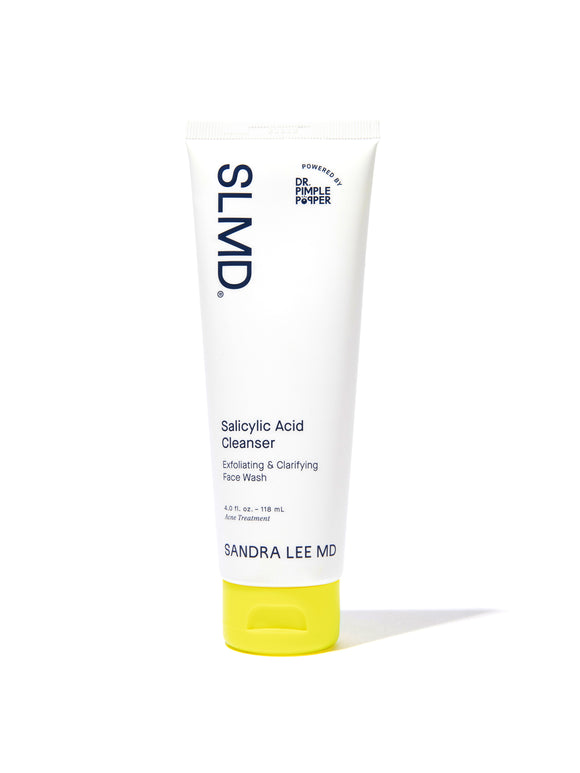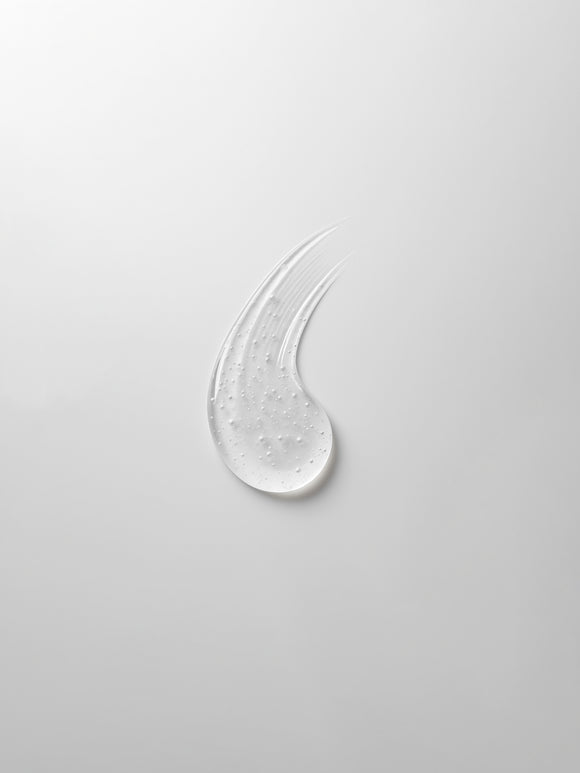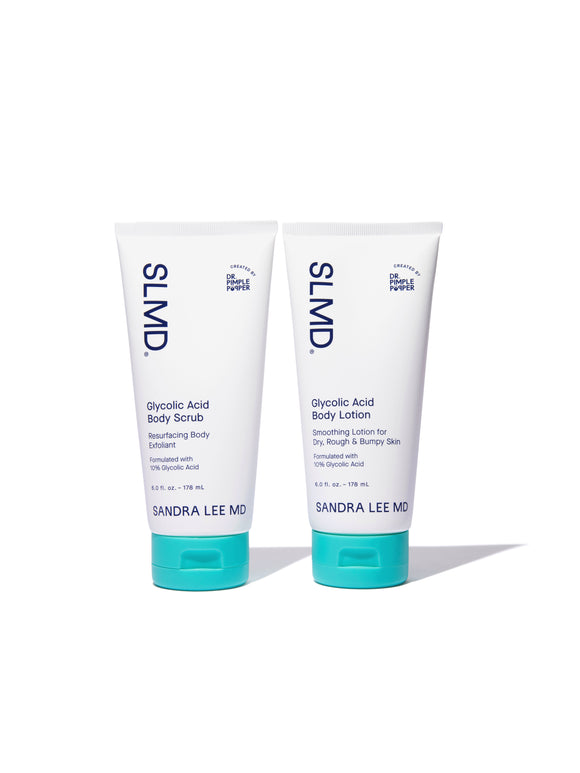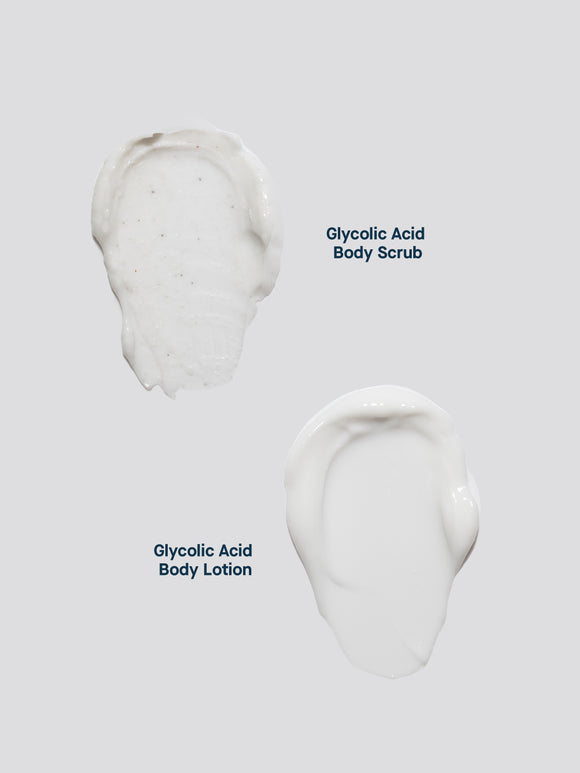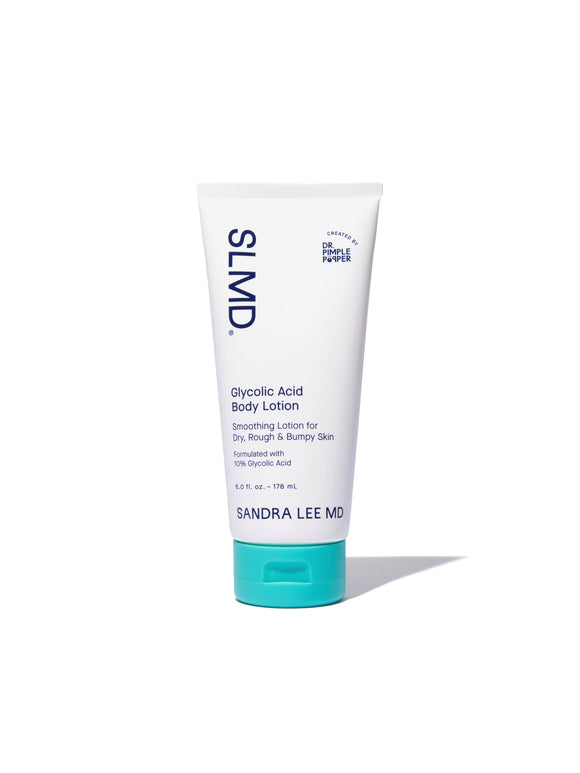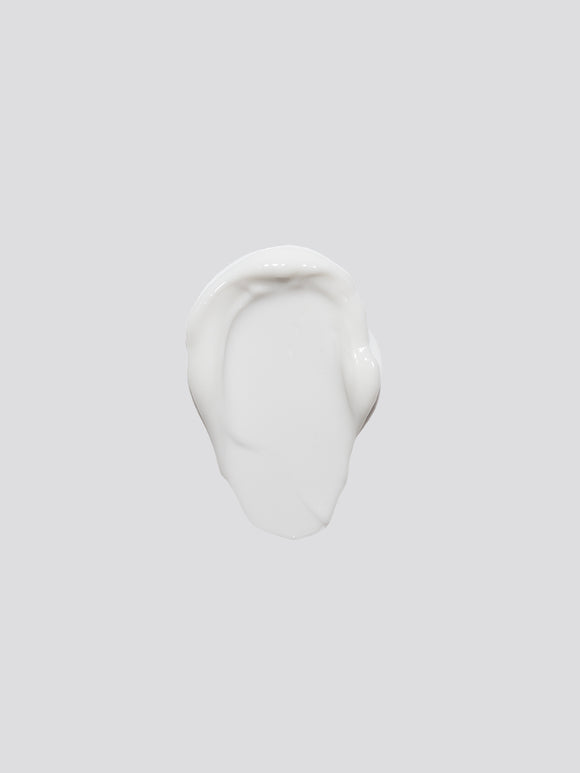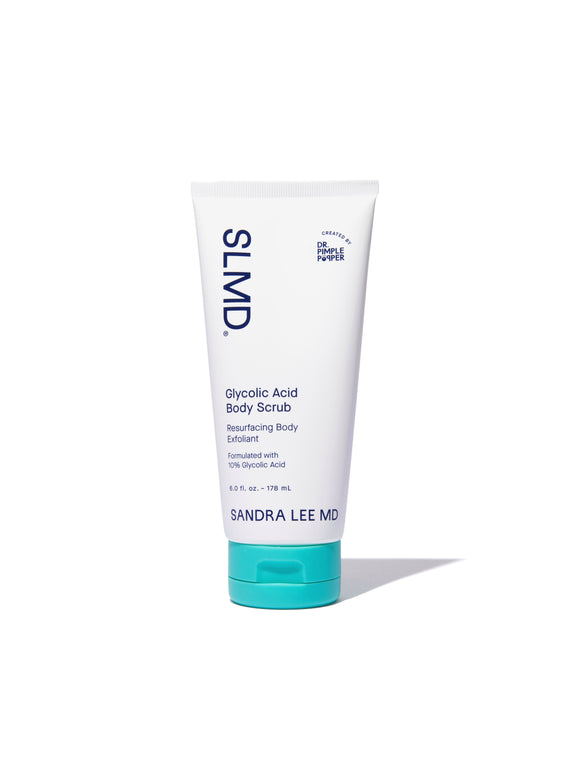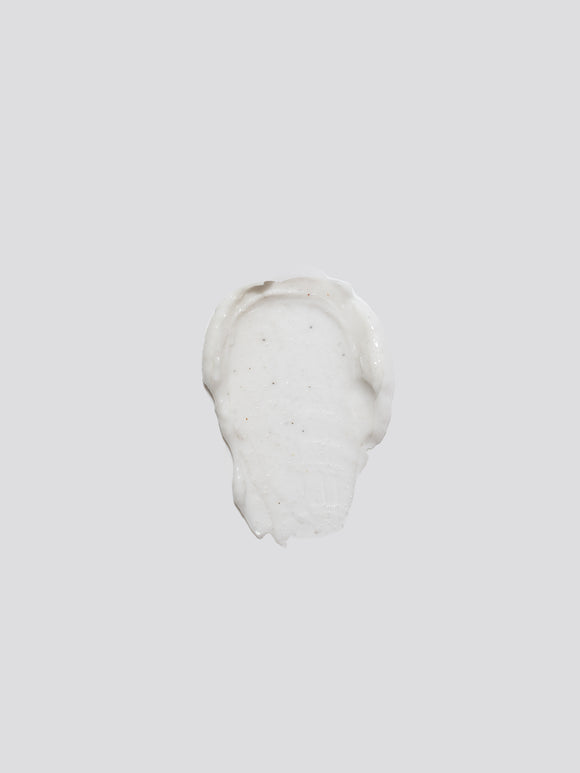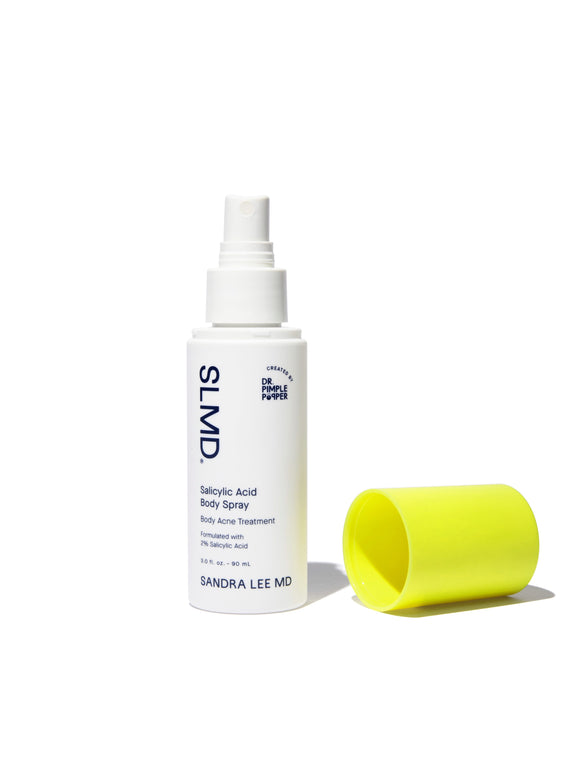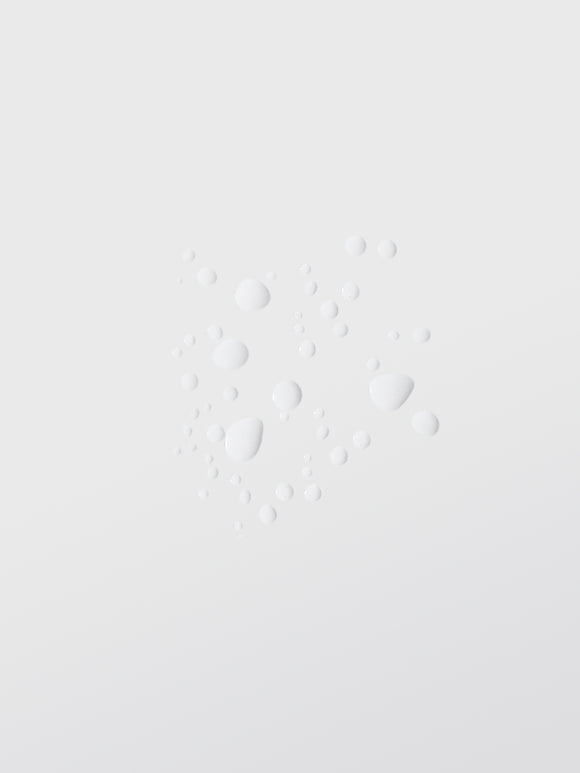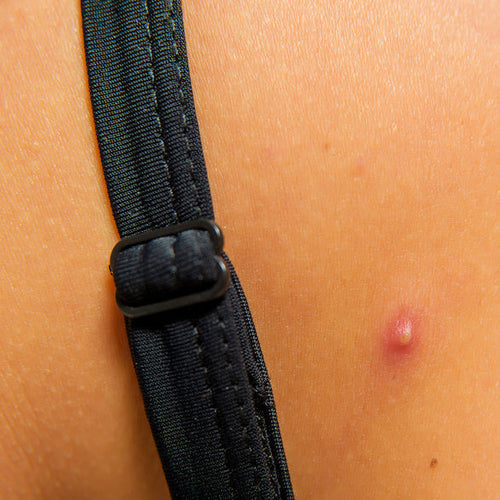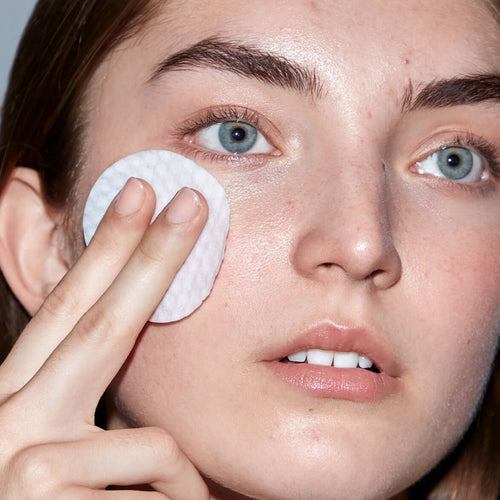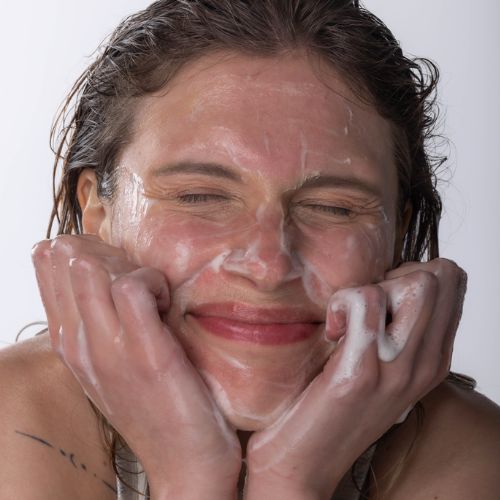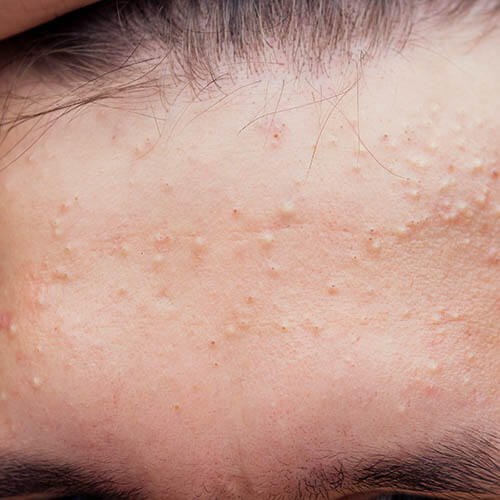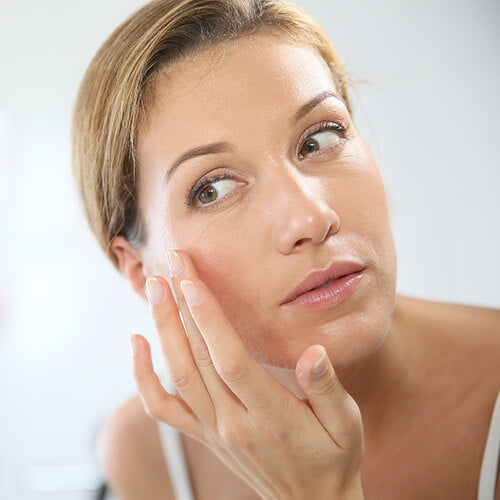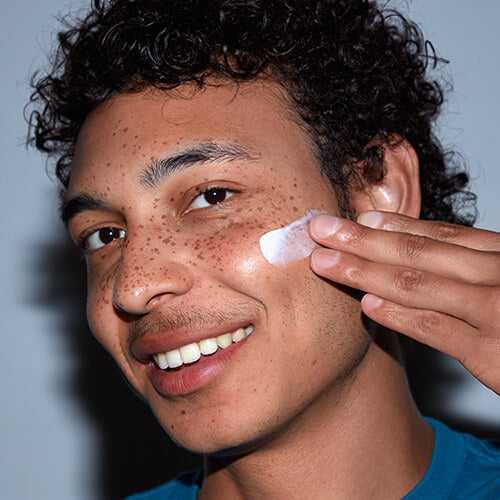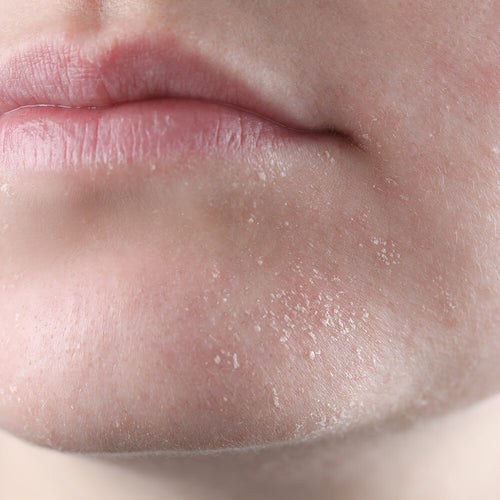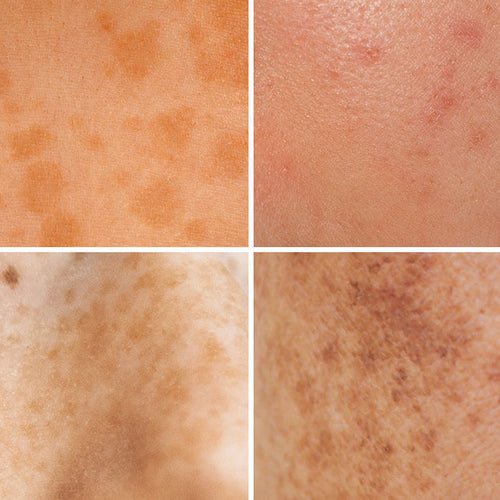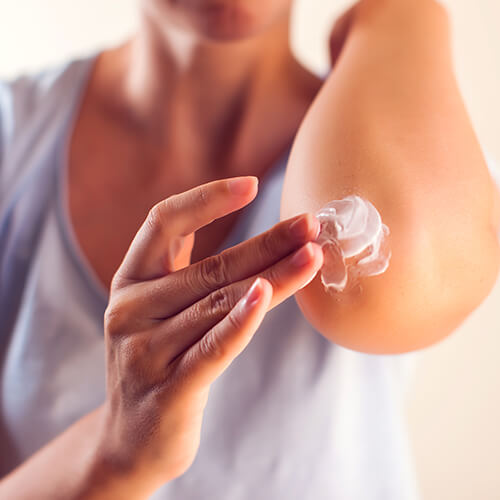
Chemical Exfoliation Explained: AHAs vs. BHAs
Dermatologists rely on these multitasking ingredients — but using them correctly matters.
Published:
5 minute read
Exfoliation is one of the core strategies dermatologists use to support smoother, clearer, more even-looking skin. Chemical exfoliation, in particular, has become a mainstay because it works with the skin’s natural renewal process — helping dead cells shed more evenly over time.
Two of the most common chemical exfoliants are alpha hydroxy acids (AHAs) and beta hydroxy acids (BHAs). Though they belong to the same family, they work differently and offer distinct advantages. Here, dermatologist Sandra Lee, MD (aka Dr. Pimple Popper), explains how these exfoliating acids work, what sets them apart, and how to incorporate them safely into your routine.
Fast Facts: Chemical exfoliants
- AHAs and BHAs exfoliate in different ways to refine skin and clear pores
- Chemical exfoliation can brighten, refine texture, and support acne treatment
- Start slowly: acids can cause irritation when overused
- Always wear SPF after using exfoliating acids
Article Quick Links
How do AHAs and BHAs work?
Both alpha and beta hydroxy acids are considered keratolytics: ingredients that loosen the bonds between dead skin cells so they shed more efficiently. This helps smooth the skin’s surface, reduce clogging, and support a clearer, more even-looking complexion.
Even though AHAs and BHAs are related, they behave differently:
- AHAs are water soluble and work mainly on the skin’s surface
- BHAs are oil soluble and can exfoliate inside pores
“AHAs polish the surface, while BHAs clean the inside of the pore," says Dr. Lee. "Most people benefit from using both, just not all at once.”
What are alpha hydroxy acids?
Alpha hydroxy acids are exfoliating acids found in fruits, milk, and sugarcane. They come in a range of strengths, from gentle daily-use formulas to more concentrated in-office peels.
Some of the most commonly used AHAs include:
- Glycolic acid: a small-molecule AHA derived from sugarcane; effective for most skin types
- Lactic acid: a gentler AHA found in milk; excellent for sensitive or dry skin
- Mandelic acid: a larger-molecule AHA ideal for easily irritated skin
- Citric acid: often used for brightening and improving tone
AHAs work by loosening the bonds between dull, dead skin cells on the surface. Though people sometimes worry that acids will “thin” the skin, these ingredients actually encourage healthier, more resilient new cells to form over time.
What do AHAs do for your skin?
Because AHAs work on the surface, they come with a number of visible benefits:
- Smooth the look of fine lines by increasing cell turnover
- Improve uneven texture and tone
- Help skin look more hydrated by revealing fresher, plumper cells
- Support fading of discoloration and hyperpigmentation
- Help manage acne by preventing dead skin buildup that clogs pores
AHAs are especially helpful if your main concerns are dullness, rough patches, or uneven tone.
Dr. Lee's Exfoliating Favorites
What are beta hydroxy acids?
The most common BHA in skincare is salicylic acid, which is naturally found in willow bark. Unlike AHAs, beta hydroxy acids are oil soluble, meaning they can move through sebum and exfoliate inside the pores. This oil solubility is what distinguishes BHAs from AHAs and makes salicylic acid especially relevant for people who produce more surface oil. BHAs are structurally similar to AHAs but function differently because of this ability to work within the pore.
What do BHAs do for your skin?
BHAs offer a unique set of visible benefits, especially if you’re prone to breakouts or congestion.
- Reduce surface dullness
- Clear excess oil, bacteria, and dead cells from pores
- Treat and help prevent blackheads and whiteheads and other acne lesions
- Minimize the appearance of sebaceous filaments
For many acne-prone skin types, salicylic acid is the exfoliant Dr. Lee recommends starting with.
Try: SLMD Salicylic Acid Cleanser, an everyday face wash that clears out pores without stripping skin.
How to choose between AHAs and BHAs
Your best exfoliant depends on your main skin concerns:
- If you want smoother, brighter, more even-looking skin → start with an AHA
- If you struggle with clogged pores or frequent breakouts → start with a BHA
- If you have both → you can use each strategically, depending on tolerance
“More isn't necessarily better when it comes to chemical exfoliants,” reminds Dr. Lee. “The gentlest approach is often the most effective long term.”
Can you combine AHAs and BHAs?
You can use AHAs and BHAs together, but the way you combine them matters. Dr. Lee typically recommends starting with one exfoliant first, then adding the second gradually to reduce the risk of irritation.
A simple, dermatologist-approved approach:
- Begin with one exfoliant a few times a week
- Once tolerated, introduce the second on alternating days
- If your skin is more experienced, you may tolerate a combined AHA/BHA product
Dr. Pimple Popper tip: “Your skin will tell you when you’re doing too much. If you start seeing redness, dryness, or flaking, pull back and give your skin a break.”
A routine many people find helpful is pairing a rinse-off salicylic acid cleanser with a leave-on AHA/BHA treatment, allowing each to work at different contact times while minimizing irritation.
Because exfoliating acids increase sensitivity to sunlight, Dr. Lee always recommends daily SPF.
Try: SLMD Salicylic Acid Cleanser, AHA/BHA Swipes, Daily Moisturizer with SPF 15)
FAQ: AHAs vs. BHAs and chemical exfoliation
Q: Is chemical exfoliation safe for sensitive skin?
A: Chemical exfoliation can be safe for sensitive skin when you choose gentler acids like lactic or mandelic and introduce them slowly while avoiding too many active ingredients at once.
Q: Should I use AHAs or BHAs first if I’m new to acids?
A: Beginners typically start with a BHA if clogged pores or acne are the main concern, or with an AHA if dullness or uneven texture is the priority.
Q: Can you use AHAs and BHAs every day?
A: Daily use of AHAs or BHAs is possible for some people, but most beginners should limit exfoliation to a few times a week to avoid irritation.
Q: Do AHAs or BHAs cause purging?
A: BHAs can sometimes trigger temporary purging as clogged pores clear, which usually appears as small breakouts in your typical breakout areas and improves with consistent use.
Q: Are AHAs or BHAs better for acne?
A: BHAs are generally better for treating active acne because they work inside the pore, while AHAs help improve overall texture and fade the marks left behind after breakouts.

Dr. Lee's Last Word
AHAs and BHAs are some of my favorite dermatology tools because they address so many skin concerns. From acne to uneven texture and fine lines, chemical exfoliation can make a meaningful difference when used correctly.



